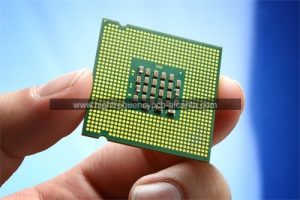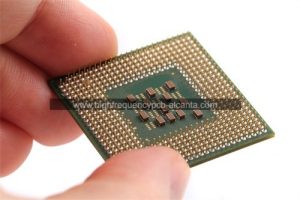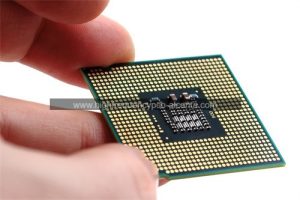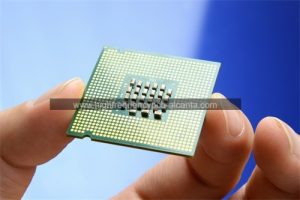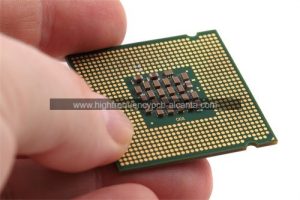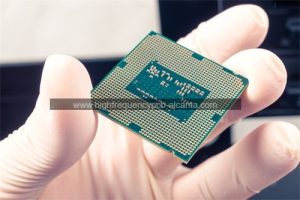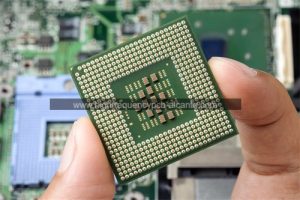What is a MCL-E-770G Package substrate?
MCL-E-770G Package substrate Manufacturer,MCL-E-770G package substrate is an advanced material designed for semiconductor packaging in high-performance electronic devices. Known for its exceptional electrical insulation, thermal conductivity, and mechanical strength, it ensures reliable operation in demanding environments. MCL-E-770G utilizes cutting-edge manufacturing techniques to produce substrates with precise dimensions and tight tolerances. These substrates support various packaging technologies, including flip chip, wire bonding, and through-hole mounting, catering to diverse application needs. Trusted by industries such as automotive, telecommunications, and consumer electronics, MCL-E-770G package substrates enable the development of innovative electronic products with superior performance and longevity.
The MCL-E-770G package substrate is a vital component utilized in electronic packaging, specifically in the assembly of semiconductor devices. Its primary function lies in bridging the connection between the semiconductor die and the broader electronic system, providing both electrical pathways and mechanical support.
Comprising layers of conductive traces, dielectric materials, and vias, the MCL-E-770G substrate is engineered to meet stringent requirements, including high-speed signal transmission, efficient thermal management, and robust reliability standards. Through its intricate design, this substrate facilitates essential electrical connections between the semiconductor die and external components.
Moreover, the MCL-E-770G package substrate often integrates advanced features like through-silicon vias (TSVs) to enable vertical interconnections and incorporates specialized materials to enhance thermal dissipation capabilities. These tailored attributes make it a critical enabler for achieving optimal performance, functionality, and durability in various electronic systems.
Whether it’s in microprocessors, memory chips, or system-on-chip (SoC) devices, the MCL-E-770G substrate plays a pivotal role in supporting the evolving demands of modern semiconductor packaging. Its continual refinement and adaptation ensure that it remains at the forefront of technological advancements, addressing the challenges posed by high-density integration, signal integrity preservation, and effective thermal regulation in today’s electronic landscape.
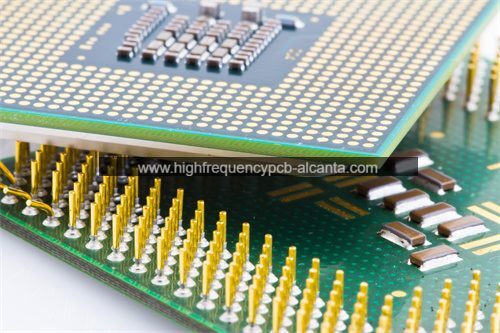
MCL-E-770G Package substrate Manufacturer
What role does a MCL-E-770G Package substrate play in modern electronic devices?
In the landscape of modern electronic devices, the MCL-E-770G package substrate emerges as a linchpin, bridging semiconductor components with the broader electronic ecosystem. Its versatile utility is instrumental in optimizing device performance:
Conductive Convergence: Acting as a conduit, the substrate fosters seamless electrical connections between semiconductor dies and external components, ensuring unhindered signal propagation across the device.
Structural Resilience: Beyond mere connectivity, it furnishes crucial mechanical reinforcement to semiconductor dies, shielding them from physical strains and fortifying their stability within the electronic architecture.
Signal Purity: Engineered for high-speed data transmission, the substrate upholds signal fidelity, facilitating swift and accurate communication among diverse components, thereby sustaining operational efficiency.
Thermal Harmony: A cornerstone function involves effectively dissipating heat generated by semiconductor elements, averting thermal imbalances and safeguarding the device’s reliability and lifespan.
Integration Agility: By harmonizing disparate semiconductor modules—be it microprocessors, memory chips, or system-on-chip (SoC) devices—the substrate enables seamless amalgamation into a cohesive electronic entity.
Tailored Optimization: Its adaptable design empowers manufacturers to fine-tune substrates to meet specific device demands, whether refining signal integrity, suppressing electromagnetic interference, or enhancing thermal dissipation.
In essence, the MCL-E-770G package substrate stands as an indispensable nexus, propelling the performance, functionality, and longevity of diverse electronic apparatuses across industries ranging from computing and telecommunications to automotive and consumer electronics.
What are the functions of MCL-E-770G Package substrates?
Within the landscape of contemporary electronics, the MCL-E-770G package substrates assume roles of paramount importance, acting as linchpins in device functionality:
Electrical Conduits: These substrates establish seamless pathways for electrical communication between semiconductor components and the broader electronic system.
Structural Support: They provide essential reinforcement to semiconductor elements, shielding them from physical stressors and maintaining optimal alignment within the device.
Signal Transmission: Engineered for high-speed data transfer, MCL-E-770G substrates ensure the efficient exchange of information across various segments of the electronic system.
Thermal Management: By effectively dissipating heat from semiconductor components, these substrates prevent overheating and uphold device reliability.
Integration Facilitation: They play a vital role in the smooth integration of diverse semiconductor modules, such as processors and memory chips, optimizing overall system performance.
Customization Flexibility: Manufacturers can tailor MCL-E-770G substrates to meet specific device requirements, enhancing factors like signal integrity, electromagnetic interference mitigation, and thermal efficiency.
In essence, MCL-E-770G package substrates serve as indispensable pillars, ensuring the efficacy, resilience, and endurance of a myriad of electronic devices across diverse industries and applications.
What are the different types of MCL-E-770G Package substrates?
The MCL-E-770G package substrates come in diverse types, each tailored to specific demands and applications:
Single-layer substrates are composed of a single material layer, making them suitable for straightforward electronic configurations with minimal components.
Multilayer substrates are constructed with multiple layers of materials, encompassing elements such as conductive traces and insulating layers. These substrates are specifically designed for complex circuits that demand increased density and signal fidelity.
High-frequency substrates are crafted to adeptly manage signals of elevated frequencies, ensuring minimal loss and distortion. Their superior performance is particularly noteworthy in applications such as wireless communication and radar systems.
Substrates designed for high temperatures are meticulously engineered to endure elevated thermal conditions. They play a pivotal role in environments where effective heat dissipation is imperative, such as in power electronics and automotive systems.
Flexible substrates, composed of materials like polyimide, provide adaptability, making them well-suited for applications that demand flexibility, such as wearable devices and flexible displays.
Embedded substrates streamline device size and weight by seamlessly integrating components into the substrate material. This integration not only reduces the physical footprint but also enhances overall performance and efficiency.
Ceramic substrates, employing advanced ceramic materials, provide exceptional thermal conductivity and mechanical strength. They are specifically tailored to meet the rigorous requirements of applications such as power modules and LED lighting.
This array of MCL-E-770G package substrates provides tailored solutions for diverse electronic requirements, ensuring versatility and performance across various industries and applications.
How do MCL-E-770G Package substrates differ from PCBs?
MCL-E-770G package substrates and printed circuit boards (PCBs) have their unique roles in the electronics domain, distinguished by specific attributes.
Functionality:
MCL-E-770G Package Substrates: Primarily act as robust foundations within electronic packages, providing stability and mechanical support for components like integrated circuits and semiconductors.
PCBs: Serve as the architectural framework for electrical connections and mechanical reinforcement across a variety of electronic elements, facilitating interconnections and mounting in diverse electronic devices.
Material Composition:
MCL-E-770G Package Substrates: Crafted from specialized materials engineered to optimize thermal performance, reliability, and electrical properties tailored for the packaging of electronic components.
PCBs: Utilize a spectrum of materials, including fiberglass-reinforced epoxy (FR-4), polyimide, and other composites, with material selection contingent on specific application requirements, desired electrical characteristics, and cost considerations.
Structural Design:
MCL-E-770G Package Substrates: Engineered to meet precise thermal and mechanical criteria for packaged electronic elements, often featuring layered structures incorporating dielectric layers and conductive traces.
PCBs: Comprise layers of conductive traces interspersed with insulating layers, accommodating the placement of components such as resistors, capacitors, and integrated circuits on the surface.
Applications:
MCL-E-770G Package Substrates: Tailored for deployment in electronic packages and assemblies, prioritizing a secure and dependable platform for integrated circuits or semiconductors.
PCBs: Exhibit versatility in application, integral to an extensive range of electronic devices spanning from consumer electronics to industrial machinery. They provide not only electrical pathways but also structural support for the entire electronic system.
In essence, MCL-E-770G package substrates and PCBs, although both pivotal in the electronics realm, fulfill distinct functions. Package substrates specialize in bolstering and interconnecting individual electronic components within packages, whereas PCBs form the foundational structure for complete electronic systems, offering support and electrical pathways for a diverse array of components.
What are the main structures and production technologies of MCL-E-770G Package substrates?
The main structures and production technologies of MCL-E-770G package substrates encompass several crucial components and manufacturing processes:
Substrate Material:
MCL-E-770G substrates are typically crafted from specialized materials like ceramic or organic substrates, chosen for their thermal, electrical, and mechanical properties.
Conductive Traces and Vias:
These elements are vital for establishing electrical connections between semiconductor components and other parts of the electronic system.
Production methods include thin-film deposition, photolithography, etching, and electroplating to create precise patterns of conductive features.
Insulating Layers:
Insulating layers ensure proper electrical isolation between conductive traces, preventing short circuits.
Thin-film deposition and photolithography are employed to form these layers accurately.
Component Mounting Areas:
Designated areas on MCL-E-770G substrates allow for mounting semiconductor components such as microprocessors and memory chips.
Surface mount technology (SMT) or through-hole technology (THT) may be utilized for component mounting.
Thermal Management Features:
Heat dissipation features like heat sinks, thermal vias, and thermal pads are integrated to manage the heat generated by semiconductor components.
Techniques such as laser drilling and embedded heat pipes aid in creating these features effectively.
Surface Finish:
The surface finish of MCL-E-770G substrates is crucial for ensuring reliable electrical connections and solderability.
Common finishes like immersion silver, immersion gold, and organic solderability preservatives (OSP) are applied using electroless plating or chemical deposition techniques.
Quality Control and Testing:
Rigorous quality control measures and testing procedures are implemented throughout production to ensure substrates meet performance and reliability standards.
Automated optical inspection (AOI), electrical testing, and thermal cycling are among the techniques employed for verification.
In summary, the production of MCL-E-770G package substrates involves a combination of material selection and advanced manufacturing processes, including deposition, lithography, etching, and thermal management techniques, aimed at achieving precise circuitry fabrication and optimal performance characteristics.
Frequently Asked Questions (FAQs)
What exactly are MCL-E-770G package substrates?
MCL-E-770G package substrates are specialized materials used in electronics to provide a foundation for mounting and connecting semiconductor components, enabling the flow of electrical signals.
What are the primary features of MCL-E-770G package substrates?
MCL-E-770G package substrates are known for their high thermal conductivity, exceptional electrical properties, mechanical stability, and precise dimensional control, making them ideal for advanced electronic applications.
In which applications are MCL-E-770G package substrates commonly utilized?
MCL-E-770G package substrates find widespread use in high-performance electronic devices such as microprocessors, memory modules, system-on-chip (SoC) devices, and various integrated circuits.
What advantages do MCL-E-770G package substrates offer compared to traditional PCBs?
MCL-E-770G package substrates provide benefits such as superior thermal conductivity, enhanced electrical performance, and the capability to accommodate finer pitch components and higher-density interconnects compared to conventional PCBs.
What manufacturing techniques are involved in producing MCL-E-770G package substrates?
Manufacturing processes for MCL-E-770G package substrates include thin-film deposition, photolithography, etching, electroplating, laser drilling, and various thermal management methods.
How can I ensure the reliability of MCL-E-770G package substrates in my electronic device?
Ensuring the reliability of MCL-E-770G package substrates involves rigorous quality control measures, comprehensive testing, and sourcing from reputable suppliers known for delivering high-quality substrates.
Where can I procure MCL-E-770G package substrates?
MCL-E-770G package substrates are typically available through specialized electronic component suppliers, manufacturers, and distributors. It’s essential to verify the specifications and compatibility of substrates with your specific application requirements before purchasing.
Conclusion
In summary, MCL-E-770G package substrates play a pivotal role in the realm of contemporary electronics, serving as indispensable components for mounting and interconnecting semiconductor elements. Renowned for their exceptional thermal conductivity, precise dimensional accuracy, and superior electrical properties, these substrates pave the way for the development of cutting-edge electronic devices. Leveraging sophisticated manufacturing techniques like thin-film deposition, photolithography, and electroplating, MCL-E-770G substrates are meticulously crafted to meet the exacting demands of modern electronic applications. Consequently, they find widespread application across diverse industries, ranging from consumer electronics to automotive systems, driving forward the continual evolution and innovation in electronic technology.In summary, MCL-E-770G package substrates play a pivotal role in the realm of contemporary electronics, serving as indispensable components for mounting and interconnecting semiconductor elements. Renowned for their exceptional thermal conductivity, precise dimensional accuracy, and superior electrical properties, these substrates pave the way for the development of cutting-edge electronic devices. Leveraging sophisticated manufacturing techniques like thin-film deposition, photolithography, and electroplating, MCL-E-770G substrates are meticulously crafted to meet the exacting demands of modern electronic applications. Consequently, they find widespread application across diverse industries, ranging from consumer electronics to automotive systems, driving forward the continual evolution and innovation in electronic technology.
 Professional high frequency circuit board supplier
Professional high frequency circuit board supplier
